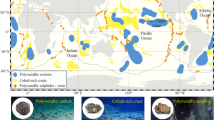Abstract
An operational three-dimensional oil spill model is developed by the National Marine Environmental Forecasting Center (NMEFC), State Oceanic Administration, China, and the model has been running for 9 a. On June 4 and 17, 2011, oil is spilled into the sea water from two separate oil platforms in the Bohai Bay, i.e., Platforms B and C of Penglai 19-3 oilfield. The spill causes pollution of thousands of square kilometres of sea area. The NMEFC’s oil spill model is employed to study the Penglai 19-3 oil-spill pollution during June to August 2011. The wind final analysis data of the NMEFC, which is based on a weather research and forecasting (WRF) model, are analyzed and corrected by comparing with the observation data. A corrected current filed is obtained by forcing the princeton ocean model (POM) with the corrected wind field. With the above marine environmental field forcing the oil spill model, the oil mass balance and oil distribution can be produced. The simulation is validated against the observation, and it is concluded that the oil spill model of the NMEFC is able to commendably simulate the oil spill distribution. Thus the NMEFC’s oil spill model can provide a tool in an environmental impact assessment after the event.
Similar content being viewed by others
References
Beegle-Krause J. 2001. General NOAA oil modeling environment (GNOME): a new spill trajectory model. Krause, 2001(2): 865–871
Cheng Yongcun, Li Xiaofeng, Xu Qing, et al. 2011. SAR observation and model tracking of an oil spill event in coastal waters. Marine Pollution Bulletin, 62(2): 350–363
Cheng Yongcun, Liu Bingqing, Li Xiaofeng, et al. 2014. Monitoring of oil spill trajectories with COSMO-SkyMed X-band SAR images and model simulation. IEEE Journal of Selected Topics in Applied Earth Observations and Remote Sensing, 7(7): 2895–2901
Coppini G, De Dominicis M, Zodiatis G, et al. 2011. Hindcast of oilspill pollution during the Lebanon crisis in the Eastern Mediterranean, July–August 2006. Marine Pollution Bulletin, 62(1): 140–153
Elliott A J, Hurford N, Penn C J. 1986. Shear diffusion and the spreading of oil slicks. Marine Pollution Bulletin, 17(7): 308–313
Guo Mingxian, Shi Ping, Liu Xin. 2010. A three-dimensional transport model for oil spills in coastal waters based on particle approach. ICNC, 213(2): 381–411
Ichiye T. 1967. Upper ocean boundary-layer flow determined by dye diffusion. Physics of Fluids, 10(9): S270–S277
Johansen O. 1984. The Halten Bank experiment observations and model studies of drift and fate of oil in the marine environment. In: Proceedings of the 11th Arctic Marine Oil Spill Program (AMOP) Technology Seminar. Canada: Environment Canada, 18–36
Johansen Ø. 1987. DOOSIM-A new simulation model for oil spill management. In: Proceedings of 1987 International Oil Spill Conference. Washington DC: API Publication, 529–532
Li Yan, Zhu Jiang, Wang Hui. 2013a. The impact of different vertical diffusion schemes in a three-dimensional oil spill model in the Bohai Sea. Advancesin Atmospheric Sciences, 30 (6):1569–1586
Li Yan, Zhu Jiang, Wang Hui, et al. 2013b. The error source analysis of oil spill transport modeling: a case study. Acta Oceanologica Sinica, 32(10): 41–47
Liu Qinzheng, Zhang Jianhua, Liu Yu, et al. 2005. Numerical forecast for the 3-dimensional sea temperature and current in the Bohai Sea. Marine Forecasts, 22(suppl): 27–34
Matsumoto K, Takanezawa T, Ooe M. 2000. Ocean tide models developed by assimilating TOPEX/POSEIDON altimeter data into hydrodynamical model: a global model and a regional model around Japan. Journal of Oceanography, 56(5): 567–581
Proctor R, Elliot A J, Flather R A. 1994. Forecast and hindcast simulations of the Braer oil spill. Marine Pollution Bulletin, 28(4): 219–229
Reed M, Ekrol N, Rye H, et al. 1999. Oil spill contingency and response (OSCAR) analysis in support of environmental impact assessment offshore Namibia. Spill Science & Technology Bulletin, 5(1): 29–38
Wang Shoudong, Shen Yongming, Guo Yakun, et al. 2008. Three-dimensional numerical simulation for transport of oil spills in seas. Ocean Engineering, 35(5–6): 503–510
Xu Qing, Cheng Yongcun, Liu Bingqing, et al. 2015. Modeling of oil spill beaching along the coast of the Bohai Sea, China. Frontiers of Earth Science, 9(4): 637–641
Xu Qing, Li Xiaofeng, Wei Yongliang, et al. 2013. Satellite observations and modeling of oil spill trajectories in the Bohai Sea. Marine Pollution Bulletin, 71(1–2): 107–116
Yang Yiqing, Zuo Juncheng, Du Lin, et al. 2012. Cost-benefit analysis of adaptation to sea level rise in major vulnerable regions along the coast of China. In: Proceedings of the Twenty-second (2012) International Offshore and Polar Engineering Conference. Rhodes, Greece: National Bureau of Economic Research, 1522–1528
Author information
Authors and Affiliations
Corresponding author
Additional information
Foundation item: The Open Project Fund of the Key Laboratory of Shangdong Province for Marine Ecological Environment and Disaster Prevention and Mitigation of China under contract No. 201402; the Project of the Key Laboratory of Marine Spill Oil Identification and Damage Assessment Technology, State Oceanic Administration of China under contract No. 201604; the National Marine Public Welfare Research Project of China under contract No. 201305031; the Cooperation on the Development of Basic Technologies for the Yellow Sea and East China Sea Operational Oceanographic System funded by the China-Korea Joint Ocean Research and the National Natural Science Foundation of China under contract Nos 41206106 and 41406042.
Rights and permissions
About this article
Cite this article
Yang, Y., Li, Y., Liu, G. et al. A hindcast of the Bohai Bay oil spill during June to August 2011. Acta Oceanol. Sin. 36, 21–26 (2017). https://doi.org/10.1007/s13131-017-1135-7
Received:
Accepted:
Published:
Issue Date:
DOI: https://doi.org/10.1007/s13131-017-1135-7




